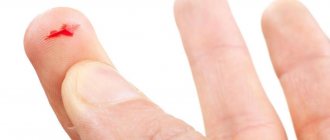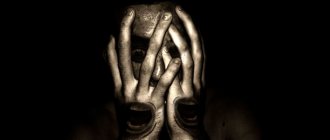Nobody likes to be sick. But there are people who experience panic fear of any disease. They suffer from nosophobia. This condition is accompanied not only by panic, anxiety, depression, but also by physical health symptoms. But this is not the main danger. A phobia is difficult to diagnose, since a person can find a lot of manifestations of various diseases and visit dozens of specialists before he understands what he is really sick with. How to be in this case? What are the ways to overcome nosophobia?
Nosophobia - what is it?
In psychology, nosophobia is the fear of getting sick. According to experts, this fear is quite common. In adults, it develops against the background of frequent stress, neuroses and other disorders, which have a long-term negative impact on the psyche and nervous system.
Such a phobia does not have a specific object of fear. It combines 2 states:
- a person is afraid of getting sick in general;
- a person experiences fear of a particular disease.
Many people mistakenly call nosophobia hypochondria, since both pathologies have similar manifestations. But they also have serious differences. Hypochondria is a mental disorder associated with the suspicion of not one, but many diseases. The fear of getting sick is usually associated with a specific disease.
To put it in simple terms, with hypochondria the patient suspects that he is sick with all diseases at once. Moreover, even those that he read about on the Internet or learned from friends are taken into account. With nosophobia, a person invents a disease and finds its symptoms in himself.
Obsessive fear of disease: forum, reviews
The fear of getting sick is often discussed on the Internet. Everyone has their own opinion on this matter. Some people manage to cope with the problem on their own, while others turn to professionals. In any case, everyone believes that the problem needs to be dealt with.
Review 1
Review 2
Review 3
Review 4
Main forms of nosophobia
There are several forms of nosophobia. Their name depends on what disease the patient fears:
- Cardiophobia - heart disease;
- heart attack phobia - heart attack;
- anginophobia - angina attacks;
- cancerophobia/oncophobia - fear of encountering cancer;
- Diabetophobia - disorders associated with diabetes mellitus;
- speedophobia - AIDS;
- syphilophobia - syphilis;
- Dementophobia - dementia.
According to psychologists, the most common are cardiophobia and cancerophobia.
Reasons for the development of nosophobia
There are 6 main causes of nosophobia. There are also a number of factors that provoke its development.
So, the causes of nosophobia:
- Traumatic memories of your own illness or prolonged observation of how a loved one is sick. Negative effects include pain, loss of the ability to move, prolonged treatment or its high cost and inaccessibility, and the need to care for someone. The situation gets worse if the disease ultimately leads to death.
- Negative experiences of diagnosis and treatment. And such cases are not uncommon. There are many stories in the media and on the Internet about how the diagnosis was made incorrectly, the wrong treatment was selected, as a result of which the patient only became worse.
- Fear of death. According to psychologists, nosophobia is one of the variants of thanatophobia. A person believes that any disease can cause his death.
- The desire to be the center of attention. There are children who received care and affection from their parents exclusively in those moments when they were sick. They grow into nosophobic adults who are overly concerned about their health.
- Overprotectiveness. If mom and dad intimidate a child, worry too much about his health, or show excessive care, the child grows up suspicious and weak.
- Developed imagination, suspiciousness. An impressionable person can easily come up with and find symptoms of any disease. When exposed to commercials and bad news, he feels extremely vulnerable. Therefore, he physically feels the manifestations of serious illnesses even when they are not there. This is called psychosomatics.
- Access to medical literature. So, a young man who is studying to become a doctor can look for signs of the disease being studied.
Where does the fear of contracting an incurable disease come from?
According to experts, difficult living conditions leave an imprint on a person’s condition, including the emergence of a desire to constantly receive treatment. The origins of the disease nosophobia are quite difficult to identify even during diagnosis. It’s easier to highlight the most significant factors that can activate a phobia:
- mental disorders, depression, suspiciousness, anxiety;
- disruption of brain activity, which introduces disorder into the autonomic nervous system, affects the loss of energy in the body, and causes delusional ideas;
- low self-esteem, inability to find one’s place in society, fiasco in intimate relationships, discord in personal life;
- unfavorable past experiences.
From the point of view of personal prerequisites, the factors for the appearance of nosophobia are the same as for other anxiety disorders: suspiciousness, emotional lability, genetic predisposition, chronic stress. A protracted illness and subsequent death of someone close can be a strong provoking factor.
Signs
Nosophobia manifests itself in psychological and somatic symptoms. The first include:
- excessive anxiety;
- panic in situations that can provoke the development of the disease (according to the person);
- depression, apathy, blues;
- difficulties in communicating with other people;
- limiting contacts.
The most common somatic signs of nosophobia are:
- lack of appetite;
- insomnia;
- heart rhythm disturbance;
- cardiopalmus;
- feeling of lack of air;
- lump in the throat;
- increased blood pressure;
- trembling of limbs;
- heavy sweating;
- chills;
- headache;
- nausea;
- stomach upset;
- dizziness;
- frequent urge to urinate.
The more such manifestations, the stronger the belief in the presence of a particular disease. A person considers even banal fatigue a sign of serious pathology.
Nosophobia can be easily identified by its behavior:
- undergoes medical examinations frequently and without reason;
- frequently performs hygiene procedures and is extremely clean;
- avoids sick people;
- spends a lot of time reading medical literature or watching relevant television programs;
- shows increased attention to well-being;
- always preoccupied with clothes, selects them strictly according to the weather;
- diagnoses himself and prescribes treatment.
Disease phobia is...
A condition in which a person persistently worries about the possible occurrence of a disease is called hypochondria (also called “hypochondriacal syndrome” and “hypochondriacal disorder”). The pathology is psychosomatic in nature and is considered reversible. It is characterized by the following symptoms:
- constant thoughts that there is some kind of illness in the body;
- panic attacks associated with fear of death or disability due to an imaginary illness;
- excessive concern about one’s physical condition (exaggerated healthy lifestyle, adherence to strict diets, active sports);
- regular conversations about health and illness;
- actually experienced somatic symptoms that do not have any medical evidence;
- exaggeration of emerging symptoms (for example, absolutely any pain is perceived as a sign of cancer);
- desire for self-medication or active visits to doctors;
- control of all processes occurring in the body, including regular assessment of the color of stool;
- instability of sensations (relatively speaking, today the hand worries, tomorrow all thoughts switch to the stomach);
- self-diagnosis based on information found on the Internet (cyberchondria).
The essence of hypochondria is that a person “winds up” himself by thinking about all sorts of pathologies. He is afraid of diseases - both already “existing” ones (although often present only in his imagination) and potential ones (this is where the fear of germs sometimes “grows”).
Often, hypochondriacs are practically healthy and it is only in vain that they “besiege” hospitals and clinics. Nevertheless, they are not immune from illness; moreover, the disorder can provoke some real illnesses. For example, prolonged intense experiences are bad for the heart.
Diagnostics
It is almost impossible to diagnose nosophobia on your own. Most likely, more than one month will pass before the patient, not finding any illnesses, turns to a psychotherapist for help.
During a conversation with the patient, the doctor assesses his condition and determines the presence of features characteristic of nosophobes:
- literacy, erudition, high level of intelligence;
- emotionality, sensitivity, developed imagination;
- the ability to discuss any disease, the desire to show oneself as a specialist in medical matters;
- deterioration in general well-being during the discussion of some illness;
- use of traditional medicine methods;
- watching medical programs, interest in new products in this field;
- visits to the doctor at the slightest change in health.
It is worth noting that nosophobes rarely turn to a psychotherapist voluntarily. In most cases, they are brought there by relatives or referred by another doctor.
How to get rid of the fear of getting sick
Treatment of any phobia, including nosophobia, must be comprehensive and include medication, psychotherapy and independent fight against the disease.
Drug therapy
Usually the doctor prescribes 2 groups of drugs:
- Tranquilizers. Take them no longer than 2 weeks. Helps cope with mental stress.
- Sedatives. They soothe, eliminate sleep problems, relieve stress in the nervous system and help cope with irritability.
It is worth remembering that only the attending physician can choose the medicine, dosage and duration of treatment. Self-medication is dangerous.
Psychotherapy
Cognitive-behavioral methods have proven themselves to be the best. Their essence is as follows:
- The patient needs to realize the very fact of the problem and accept nosophobia as a real disease.
- A psychotherapist helps to identify the reasons for the development of fear of getting sick, works with them so that they can no longer have a traumatic effect on the psyche.
- The doctor forms positive attitudes in the patient’s mind, and also changes his attitude towards illness and his health.
The three most common phobias and how to stop being a hypochondriac
© Picasso, “Femme aux Bras Croisês”
Hypochondria is not a disease. And yet, sometimes it causes such suffering, as if the person were really unwell. The International Classification of Diseases (ICD-10) today describes hypochondriacal disorder (F45.2) as follows:
“The most important feature [of hypochondriacal disorder] is the patient's persistent preoccupation with the possibility of having a severe, progressive disease or several diseases. The patient presents persistent somatic complaints or shows persistent anxiety about their occurrence. Normal, ordinary sensations and signs are often perceived by the patient as abnormal and disturbing; he usually focuses his attention on only one or two organs or systems of the body. Significant depression and anxiety are often present, which may explain additional diagnoses. A disorder characterized by preoccupation with one's own health."
Before diagnosing yourself with hypochondria, it is worth finding out what the somatoform disorders to which it refers are. Their main feature is distrust of doctors: hypochondriac patients make their claims repeatedly, demanding examinations and tests, even if previously the results were negative. Existing somatic (that is, not caused by mental activity) diseases do not explain what the patient complains about.
In other words, not everyone who painfully and unreasonably suspects that they have cancer or AIDS are hypochondriacs: many will forget about anxiety as soon as the doctor says that everything is fine. And yet, due to the flow of alarming information that befalls us, even mentally healthy people often suffer from fear.
Cancerophobia
One of the most common forms of hypochondria is cancerophobia, in which a healthy person is afraid of getting cancer. A variety of people all over the world suffer from it, because many people know that cancer is a common cause of death (second only, however, to cardiovascular diseases, which no one is so afraid of), and not everyone tolerates treatment for them easily. Cancerophobia occurs for various reasons. The basis for it may include:
1) reaction to the death of a loved one from cancer;
2) reaction to surgery to remove benign tumors or cysts;
3) the doctor’s comment during the examination (the comment is perceived as a hint or warning);
4) the presence of precancerous diseases (cervical erosion, stomach ulcers, etc.);
5) obsessive-compulsive neurosis, hypochondria, psychopathy, depression, schizophrenia;
6) generalized anxiety disorder;
7) chronic stress, which is accompanied by sudden weight loss;
 chronic pain syndrome (for example, migraine);
chronic pain syndrome (for example, migraine);
9) menopause, when a woman is forced to undergo regular preventive examinations.
Advertising of medicinal and preventive products that supposedly prevent the development of malignant neoplasms also does not add confidence to people in the future and, in fact, seems to push them to the thought: “Do I have cancer?”
All this, of course, does not mean that you need to ignore alarming symptoms, attributing them exclusively to cancerophobia. However, it is necessary to distinguish its effect from truly important changes in health. One of the best ways to do this (and deal with cancerophobia, as well as other similar conditions) is to go to the doctor. No matter how frightening this need may seem (“What if they find something?”), as a rule, a visit to the clinic ends with a feeling of relief. This step itself—visiting a doctor—should be perceived as therapy, an effective way to cope with the horror that has haunted us for a long time. Cancerophobia constantly distracts attention, forces you to listen to yourself, look for lists of symptoms, and this makes you even more scared.
If the fear does not go away after contacting doctors, or if a person knows that he has obsessive-compulsive disorder, hypochondria, psychopathy, depression, schizophrenia, anxiety disorder or other problems, psychotherapy will help to cope with the phobia - along with the underlying mental illness. Maintaining mental health is as necessary as treating your teeth or ears - and there is absolutely no reason to be ashamed of it (after all, we are not ashamed of having been to the dentist or ENT specialist).
Fear of getting schizophrenia
The fear of becoming a victim of mental illness does not seem to be as widespread as cancer phobia, but it is still a serious problem. Most often, such a phobia accompanies other mental disorders (but is never combined with schizophrenia itself): neuroses, obsessive-compulsive disorder, panic attacks and depression. In other words, if a person is afraid of going crazy or observes the characteristic symptoms of a schizophrenic disorder, this means that he is healthy or almost healthy. A real patient with schizophrenia will never suspect that he has it: on the contrary, due to the so-called delusional awareness of what is happening (this is a state when the “oddities” surrounding the schizophrenic finally add up to a coherent picture on a global scale), it will seem to him that there is something wrong with those around him .
However, the obsessive fear of madness - lissophobia - requires contacting a psychotherapist. In this case, they will not treat you for schizophrenia, they will not call you a schizophrenic, but they will help you cope with the main, real problem, which is not madness at all.
Fear of AIDS
Many urban legends fill us with fear. These include, for example, the myth of a vengeful patient who places blood-stained pins and notes on seats in cinemas and subways: “Now you have AIDS!” People are also often afraid of contracting HIV or hepatitis at the dentist's office, when taking a blood test, at a nail salon, etc.
The truth is that according to the website Aids.ru, there has not yet been a single case of HIV transmission from patient to patient in a dental office. All instruments here undergo the strictest sterilization: first they are bathed in a special solution, then sealed in sealed bags and sent to an autoclave. It, due to high temperature and steam under pressure, provides one hundred percent sterilization. Moreover, all instruments have indicators that show whether they are sterile. And for doctors who are in a special risk group, every dental office has a so-called “AIDS kit” (“form-50”), which allows first aid to be provided if the doctor cuts himself or injects himself.
HIV cannot be contracted through handshakes, through towels, bed linen, clothes, in the pool, through mosquito bites, kisses, the notorious injections in transport, syringes in the clinic, and in nail salons. Today, 30 years after the start of the AIDS epidemic, we know that such a virus is transmitted only through unprotected sexual contact, through injections with shared instruments, from mother to child during pregnancy, childbirth and breastfeeding. If a person follows basic precautions, it is difficult to become infected with HIV, but protecting yourself from it, on the contrary, is very easy.
How to stop being a hypochondriac?
Mark Tyrell
therapist and co-founder of Uncommon Knowledge
Advice like “just don’t think about it” doesn’t work. Why? Because this way you only focus more on the thought. The recommendation to “distract yourself” can be helpful, but you need to really distract yourself, otherwise you will think, “I know I’m trying not to think about the fear that this headache is about...”.
Anxiety is like water. She needs a container - a thought that will give her form; a channel through which she can move. Such a “capacity” could be uncertainty in a relationship with a partner, fear of a boss, hypochondria, or something else. If you try to throw the container away, the water will still remain. To cope with painful anxiety, you need to work with its source - with feelings (water), and not with thoughts (containers).
If you're trying to cope with hypochondria, here are four tips:
1) Relax, relax and relax again. The less stressed you are, the fewer containers for anxiety your imagination will invent.
2) Beware of self-diagnosis. The internet is a great place, but wanting to “look up symptoms” and “see what it could be” is a bad idea. The fact is that any symptoms that you are ready to vividly imagine, with such searches, can be associated with any disease you are looking for. Plus, when you know what symptoms to look for, you may actually find them in yourself. People are indeed capable of inducing this or that sensation in themselves (to a certain extent).
Leave the diagnosis to professionals who can look at your health on a different scale. A friend of mine was convinced he had bladder cancer, but it turned out he was simply eating too many beets.
3) Trust your body - it can take care of you and knows what is good and what is not so good. Recent studies have shown that hypochondriacs care less about their health: they smoke more, drink more and exercise less. Take care of your body and rest assured that it is doing the best it can for you.
4) Take a break. The over-inclination to become aware of every little change quickly becomes a torment. Hypochondriacs pay attention to any pain, muscle tension, or dizziness. However, the body is a system that regulates everything within itself, and natural, harmless changes occur in it, which are recognized by the psyche. Most of these “messages” remain in the subconscious. Mild pain, rumbling in the stomach and tingling are signs that you are alive. Hypochondriasis begins when a person decides that all these signals are a sign of disaster, although they actually mean nothing of the kind.
Once you become less anxious, you will be able to focus on what is happening around you, engage in the process of life, and feel connected to other people. So overcoming hypochondria will be a big step towards personal development in every sense.
September 30, 2015










